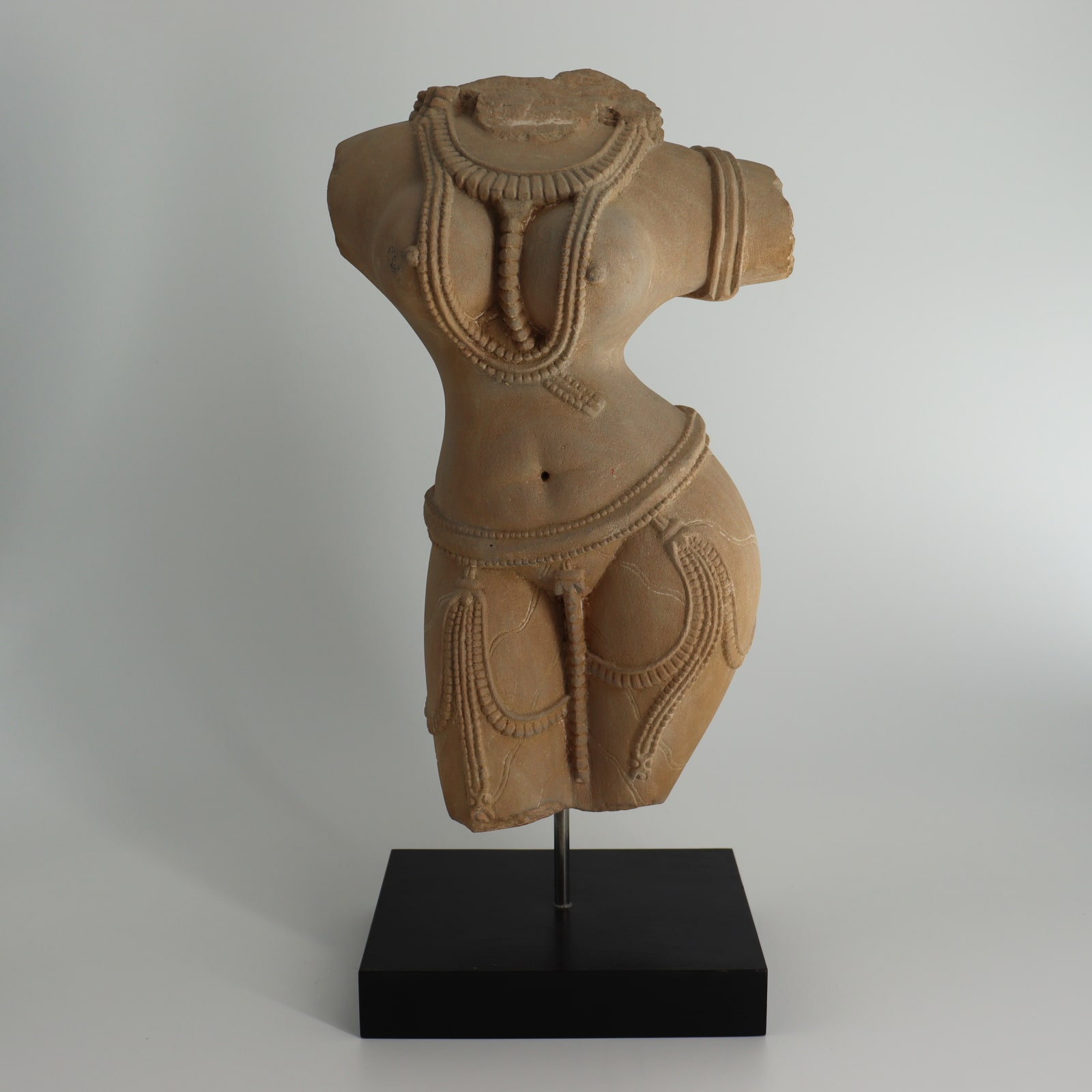Figure of a Dancing Apsara, 12th Century CE - 15th Century CE
Sandstone
35 x 21.5 cm
13 3/4 x 8 1/2 in
dimensions given without mounting
13 3/4 x 8 1/2 in
dimensions given without mounting
GM.0113
Further images
This beautiful statue of an Apsara testifies to the great artistic refinement and technical prowess of the craftsmen active in India during the period comprised between the 12th and 15th...
This beautiful statue of an Apsara testifies to the great artistic refinement and technical prowess of the craftsmen active in India during the period comprised between the 12th and 15th centuries CE.
Apsaras are the female spirits of the clouds and waters in Hindu and Buddhist mythology. They are very well represented in South Asian and Southeast Asian artistic cultures. Their names come from two Sanskrit words: ap (water) and sar (to move) and is usually translated by scholars as meaning “going in the waters” or “between the waters and the clouds”. In Hindu mythology 26 Apsaras dance at the court of Ingra, the king of heaven, where they entertain and seduce gods and mortals. Each of Apsara is also the muse of a specific performing art. Here an Apsara is represented following the traditional iconography of a beautiful girl superbly skilled at dancing. She is naked except for a vast amount of jewels, which beautifully adhere to the body strengthening the impression of movement in this seductive dance. The breast is adorned with numerous pendants, with bracelets around the arms, falling elegantly over the back. The statuette is well preserved, with head, arms and lower part of the legs missing.
Apsaras are the female spirits of the clouds and waters in Hindu and Buddhist mythology. They are very well represented in South Asian and Southeast Asian artistic cultures. Their names come from two Sanskrit words: ap (water) and sar (to move) and is usually translated by scholars as meaning “going in the waters” or “between the waters and the clouds”. In Hindu mythology 26 Apsaras dance at the court of Ingra, the king of heaven, where they entertain and seduce gods and mortals. Each of Apsara is also the muse of a specific performing art. Here an Apsara is represented following the traditional iconography of a beautiful girl superbly skilled at dancing. She is naked except for a vast amount of jewels, which beautifully adhere to the body strengthening the impression of movement in this seductive dance. The breast is adorned with numerous pendants, with bracelets around the arms, falling elegantly over the back. The statuette is well preserved, with head, arms and lower part of the legs missing.











